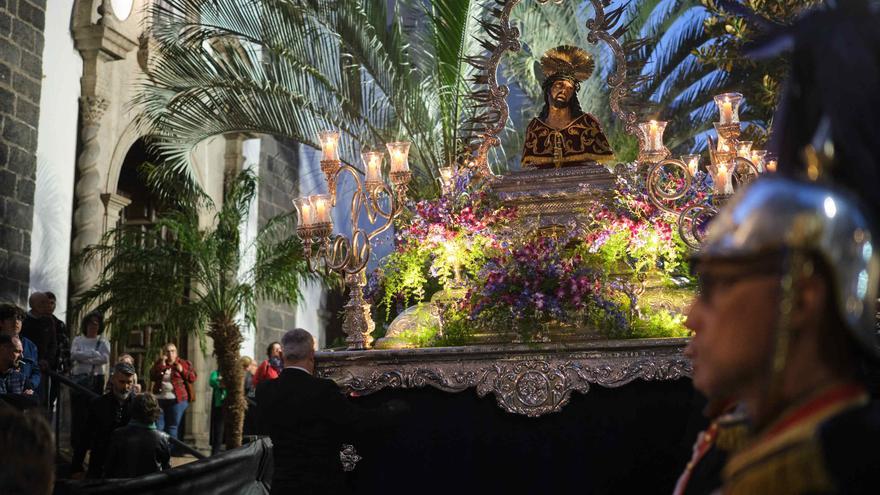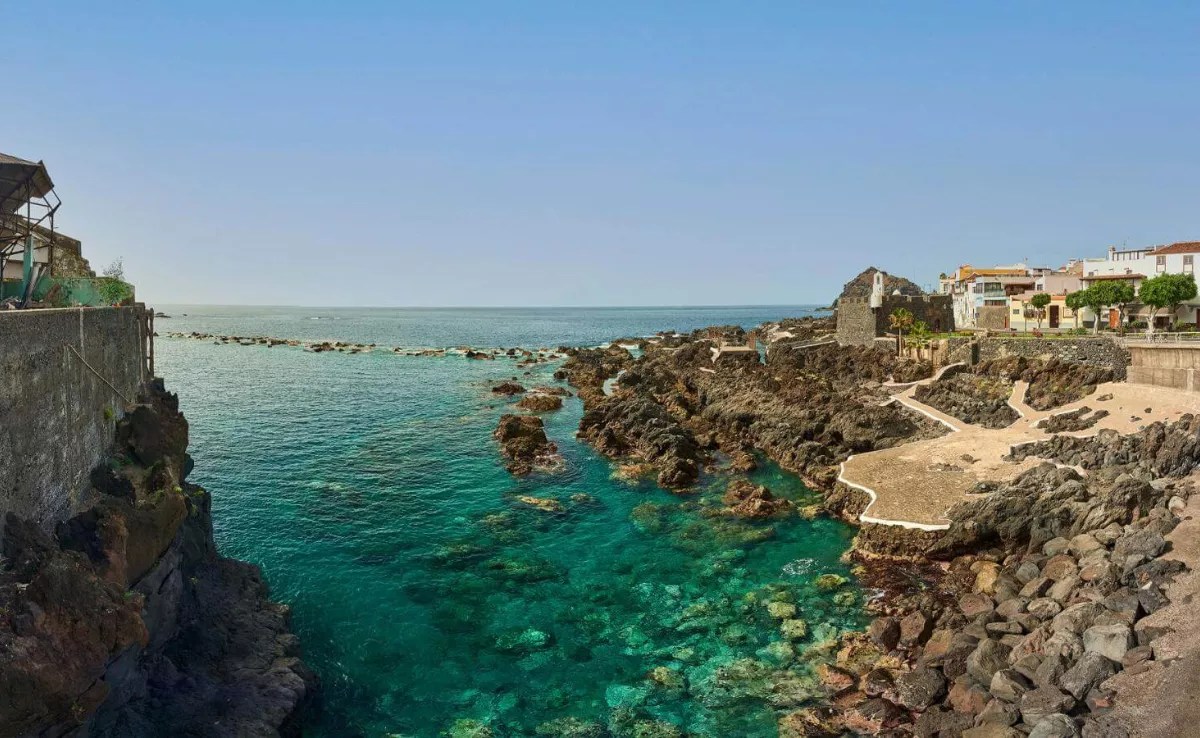
Yesterday, the procession with the longest tradition in Santa Cruz toured the streets of El Toscal, the famous neighborhood of the capital. The image, which some call the Lord of Santa Cruz, came from the parish of San Francisco de Asís and later entered an area steeped in history. There the neighbors made rugs of dyed salts again and the devotional scenes of each year were repeated. It was after 8:30 p.m. when the procession left the church and the parade began. Outside the temple, unconditional santacruceros of the Lord of Tribulations and neighbors from other parts of the Island awaited.
“I knew that the weather was better in Santa Cruz than in other places and we decided to come here to spend the afternoon,” said Marcos, who was accompanying his parents, shortly before the procession began, when the band and other members of the procession they situated. “I had not come for years and it is difficult to park in this area of Santa Cruz, but we encouraged ourselves and came to see this,” explained this lagoon.
“I have been coming here all my life, except when I was working in the South,” said María Pérez, raised in Santa Cruz and a resident of Tacoronte. «I have relatives who have lived in El Toscal and my whole family has always had great devotion to the Lord of Tribulations», exposed. Another testimony is that of Carlos gonzalez58 years old: «I took advantage of the fact that I had the day off and that, whenever I can come, I do, to stop by here this afternoon».
The story of this image that arouses so much faith is told in the program of events for this year’s Holy Week in the capital. The restorer-conservator of works of art Meritxell Barroso, who carried out the last performance that has been carried out on the work, dedicates the article Image of the Lord of Tribulations to her and her avatars. «He is known as the Lord of Santa Cruz and specifically he is the patron saint of the mythical Santa Cruz neighborhood of El Toscal. He goes out in procession every Holy Tuesday.
1893
The Italian ship ‘Remo’ brought an epidemic of cholera-morbidity to the Island and only El Toscal, entrusted to the Lord of Tribulations, escaped
Improvement
The image is recently restored after the works presented last year
In 1893, the presence in the port of Santa Cruz of the Italian ship Remo brought an epidemic of cholera-morbid disease, only the fishing district of El Toscal being freed from the disease, for entrusting itself through incessant prayers to the Lord of Tribulations, who had achieved great popularity and devotion in relation to events-milestones related to diseases and collective epidemics, becoming the main thaumaturge», the text begins. The aforementioned restoration works, which were presented last year, allowed the carving to be dated to the last third of the 17th century, and not to the 18th century, as was believed.
Barroso points out in the article that the piece was “made out of Canary Islands», although he adds that «there is no documentary evidence of how and by whom he arrived on the Island». And he continues: «There are a multitude of hypotheses and stories that relate her to the Rodríguez de Carta family or to the clergyman Don Fernando de San José Fuentes as such. The first news of its existence is that it was in the middle of the 18th century in the chapel of the old Civil Hospital of Nuestra Señora de los Desamparados de Santa Cruz, being at the end of the same century when it was placed in the church of San Francisco de Asís, in a small altarpiece where he would receive perpetual worship».
«Until the moment of restoring it in the course of the years 2021-2022, from all perspectives and opinions (historians, chroniclers and fans), it was a light sculpture of corn paste, from the American Baroque school of Michoacán or another Mexican school, within the technique called titsingueri, a technique whose base was a simple frame, which left an interior cavity”, he exposes, and completes: «On which layers of corn paste were added, achieving stiff anatomical aspects, more or less realistic depending on the way of execution and expertise. Even sculptors from Spanish schools were required in those schools to perfect the technique and achieve more realistic results».
The official chronicler of Santa Cruz, José Manuel Ledesma, has also written about this image. In 2020, Ledesma toured the history of the carving and recalled another of its miracles, narrated as follows by Francisco Tolosa, administrator of the Hospital de los Desamparados, in a letter sent to the vicar of Santa Cruz: «On June 22, 1795, José Carta, general treasurer of Reales Rentas, took the image home to place it in the room of his wife, María Nicolasa Eduardo, who was seriously ill. Once there, a crystalline liquid began to come out of the Ecce Homo’s face which, due to its fluidity and transparency, was thought to be water, so it was dried with some cotton.
As soon as the same thing happened again, José Carta sent for Lieutenant Pedro Ortiz, who, doing the same diligence to clean it, considering that the cause of this event was due to the proximity of a lamp that was next to the bust, They verified that, once the lamp was removed, the same thing happened again for the third time, now in the presence of the aforementioned gentlemen and several secularists who were in the room; who testified before a notary public.”
After this procession, Holy Week in Santa Cruz continues today with new appointments. From La Candelaria (Barrio de La Salud) the parade of the Nazarene is planned, while the program includes the Procession of the Meeting from 20:30. The Lord of Medinaceli will leave the parish of San José from 10:00 p.m.
















